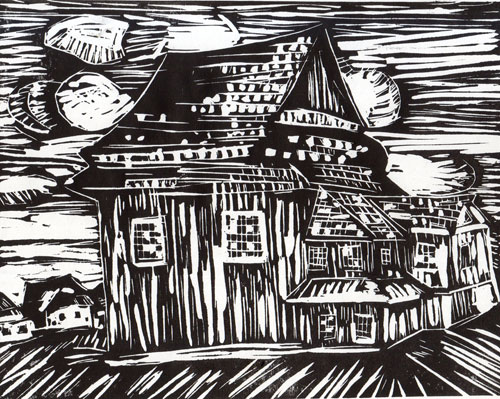Lost Treasures: The Wooden Synagogues of Eastern Europe The Artwork of Bill Farran
Byeshankovichy, Belarus - Original Linocut
Byeshankovichy, Belarus - Original Linocut
Beshenkovichi [Rus], Bishenkovitz [Yid], Bieszankowicze [Pol]
Byeshankovichy was a small village in the Grand Duchy of Lithuania. In 1630, the village was purchased by Kazimierz Leon Sapieha. It underwent rapid expansion and was granted the right to hold fairs in 1634. The nobility encouraged Jewish traders to settle in the town. New stone houses were built, and trade fairs were held semi-annually, frequented by 4,000 to 5,000 visitors from Belarus, Russia and abroad.
After the first partition of Poland in 1772, control of the village was passed to the Russian Empire. By 1900, Byeshankovichy was primarily Jewish, numbering 3,182 and representing four fifth of the population. The town had a wooden synagogue, prayer houses, three benevolent societies, and numerous religious schools.
During World War II, Byeshankovichy fell under German control. The entire Jewish population was murdered.
Purchase a print
Original linocut prints are 8x10 inches, and are available either unmatted or in an 11x14 matte.
I also offer matted 5x7 digital prints. These prints are created from high-res digital images and come in an 8x10 matte.
